In recent months, reports of funding cuts have been coming in from all sides. Whether from government agencies like USAID or shifting priorities in national budgets, NGOs and humanitarian organizations are facing increasing financial pressure. But it's not just about shrinking budgets — civil society organizations are also being challenged on a deeper level. Their fundamental values, legitimacy, and the very relevance of their work are under scrutiny.
In this climate, NGOs must not only secure funding but also defend their purpose. Transparent communication and ethical storytelling are no longer optional — they are essential tools for survival and for maintaining trust in times of uncertainty.
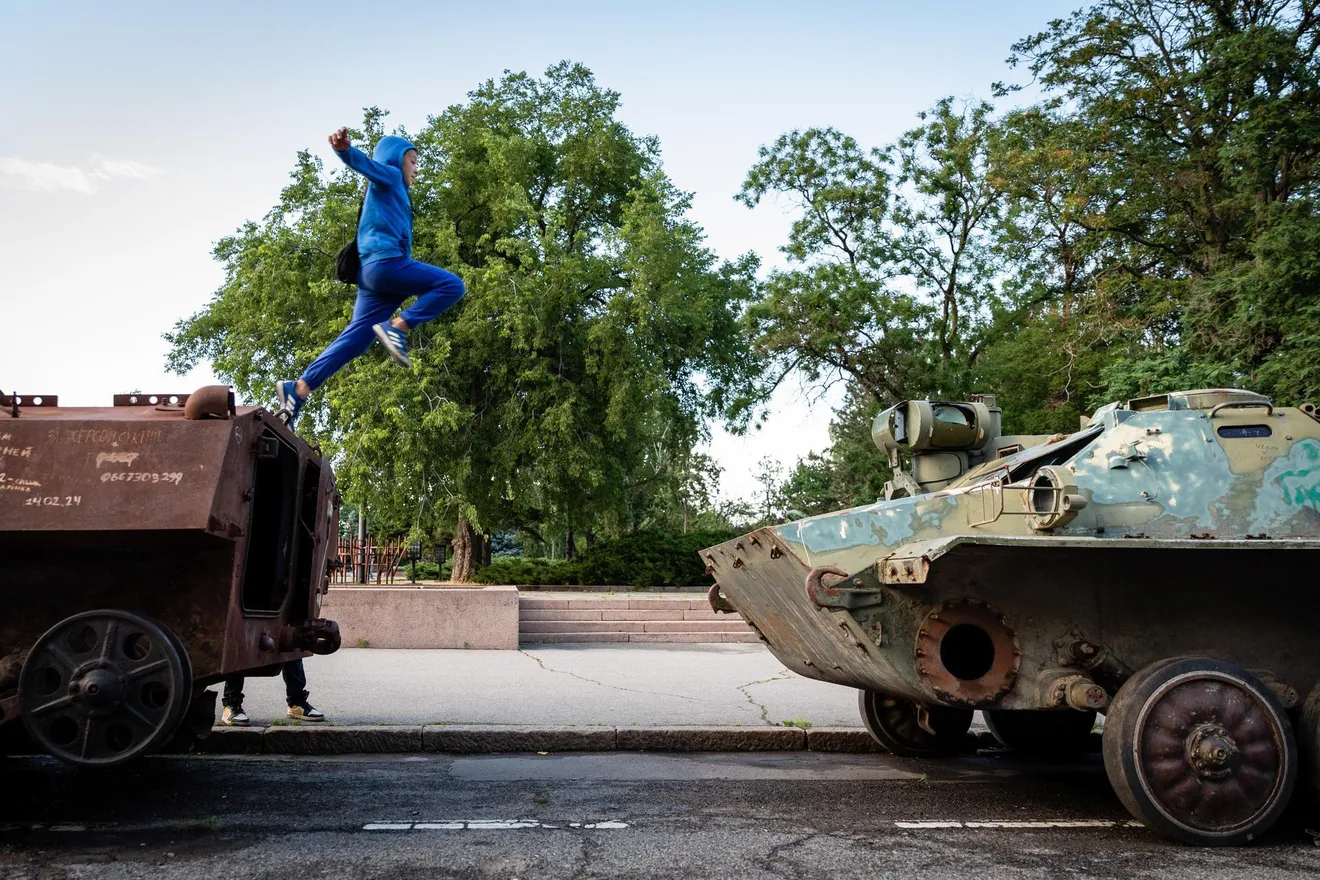
Destroyed Russian equipment is on display in the streets of Mykolaiv. Children often use the wreckage as a playground. Pictures cannot end wars — but they can bring the suffering and hardship of victims into the public eye, strengthening civil society's resistance to injustice and violence.
Photo: Mykolaiv, Ukraine – Katya Moskalyuk / Fairpicture
As funding cuts intensify, the pressure on fundraising teams grows. At the same time, many organizations are forced to downsize, restructure, and streamline operations. In such situations, it's tempting — and often necessary — to prioritize short-term solutions. Unfortunately, this can lead to falling back into outdated communication patterns: oversimplified narratives, stereotypical imagery, and neglecting hard-won ethical standards in storytelling.
But precisely now, when donor fatigue is rising and public trust in institutions is wavering, what’s needed more than ever are stories that strengthen relationships, foster trust, and clearly demonstrate the value of humanitarian work.
Authentic, real stories — supported by contextual, consent-based images — create meaningful connections. Ethical storytelling isn’t just about doing the right thing; it’s a strategic response to today’s challenges in fundraising and communication.
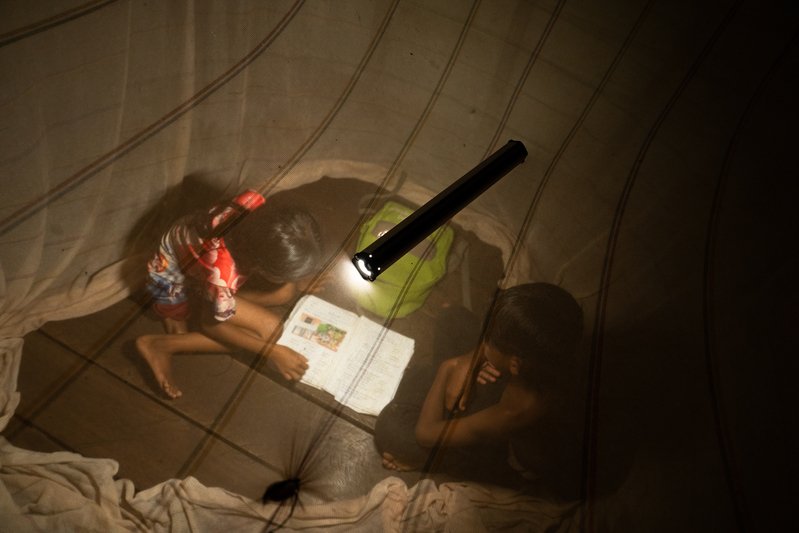
Oeun Elisa and Oeun Ranun, with the LED solar light, help each other read and review school books. Before long, river mosquitoes started biting them, so they moved inside the mosquito net and placed the LED solar light on top of it
Photo: Phnom Penh City, Cambodia 2025 – Saobora Narin / SolarBuddy / Fairpicture

FairTalk #14: Reclaiming Ethical Fundraising in a Time of Nonprofit Cuts is happening on 10th June 2025, at 5pm CET.
This is part of our ongoing series exploring the role of ethics in visual storytelling and communication across the nonprofit and development sector.
Join us live to explore how NGOs can respond to today’s funding pressures without compromising their values.
When organizations revert to simplified narratives or seek quick fixes through AI-generated content, they risk alienating donors and the broader public. This can lead to a downward spiral: weakened engagement, reduced trust, and ultimately, declining support.
Key aspects of donor fatigue include emotional exhaustion, a sense of ineffectiveness, being overwhelmed by multiple crises, and growing skepticism due to negative reports about how funds are managed.
So, how can authentic storytelling counter this?
In short, ethical storytelling transforms passive donors into committed partners by creating a deeper, trust-based relationship.
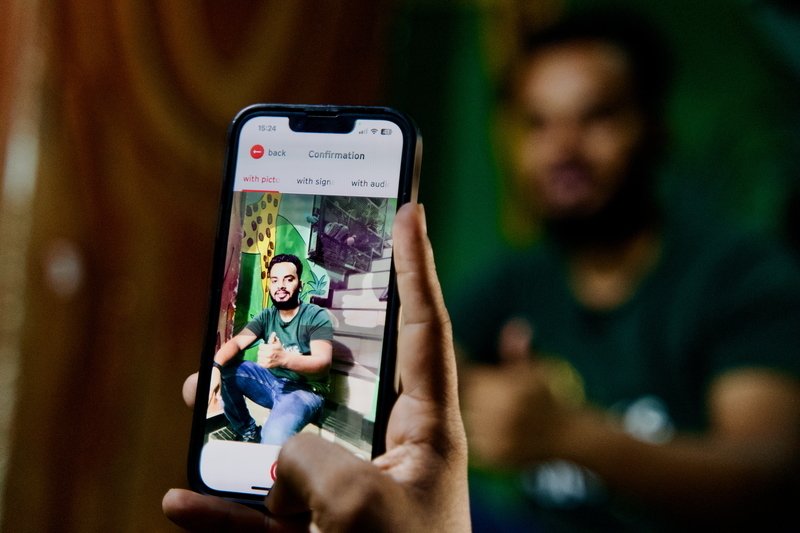
Person giving consent via the FairConsent app.
Photo: Maharashtra, India 2025 - Prakhar Deep Jain / Fairpicture
One might say that AI can help us in this difficult moment. But this is a slippery slope. In a world increasingly flooded with AI-generated content, truth and trust become even rarer currencies — both are under pressure. NGOs rely on both to sustain their work in the long term.
While AI can automate processes and generate generic narratives, it cannot create genuine human connection. Why not? Because trust is built on authenticity, empathy, and relationships — qualities that algorithms cannot replicate. AI lacks context, lived experience, and the nuanced understanding required to tell stories that truly resonate on a human level.
Now more than ever, we need real images and true stories — created by people, for people. The value of such stories is rising precisely because they stand out in a digital landscape saturated with artificial content.
We must actively support and collaborate with local visual storytellers — those who bring authentic perspectives from within the communities they represent. This isn’t just ethical; it’s essential for fostering credible, transparent, and collaborative communication that strengthens both humanitarian work and civil society as a whole.
But that’s not all. Local storytelling also requires professional structures — and these can only thrive if they are properly funded. The hypothesis is simple: the more professional the structures, the stronger and more independent the storytellers become. This professionalism leads to greater authenticity, a deeper reflection of truth, and ultimately reinforces the role of storytelling as a vital part of the fourth estate. By investing in local, professional storytelling, we’re not only improving communication — we are contributing to media diversity, accountability, and a more balanced global narrative shaped by those who live it.
Noah Arnold, Fairpicture
At Fairpicture, we believe that ethical storytelling is the key to connecting with donors and strengthening trust in civil society. That’s why we offer a full package:
Our mission is to empower NGOs, humanitarian organizations, and social enterprises to communicate with integrity — fostering genuine connections, building trust, and supporting the vital work of civil society in challenging times.
Because in the end, real stories don’t just create real bonds — they stand for something. They reflect values, take a stance, and build trust where it matters most. Powerful stories are more than content; they are statements of integrity, authenticity, and connection. And that’s something no AI will ever replicate.
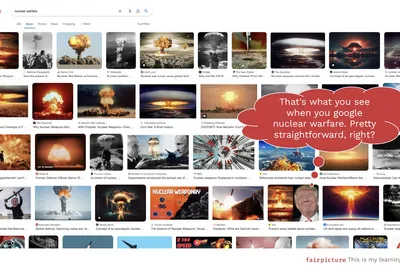
July 2024 - Noah Arnold
The Fairpicture lens on representation and stereotypes is relevant in many fields. See how we challenge the depiction of nuclear weapons, exploring ethical journalism and societal impact.
Learn more about Deconstructing Nuclear Weapons Stereotypes: The Intersection of Journalism and Ethics
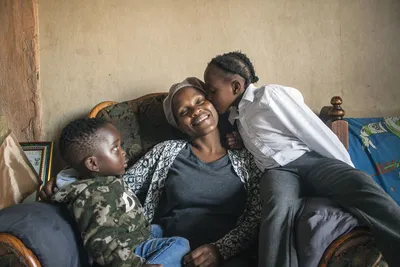
March 2023 - Miša Krenčeyová
The images that come into your mind when you think of the term “Third World”, will most probably be related to this symbolic figure - through language.
Learn more about In social justice, internal language guidelines are never “done”
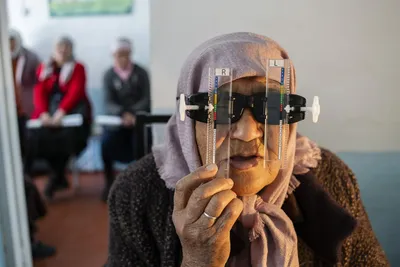
November 2023 - N'Deane Helajzen
Discover how AI reshapes creative storytelling and faces ethical hurdles in our latest post.
Learn more about Navigating Generative AI in Ethical Visual Communication: Opportunities, Challenges, and the Role of Authenticity